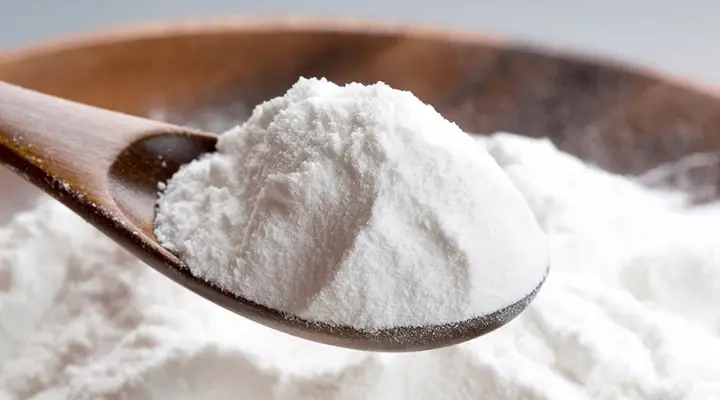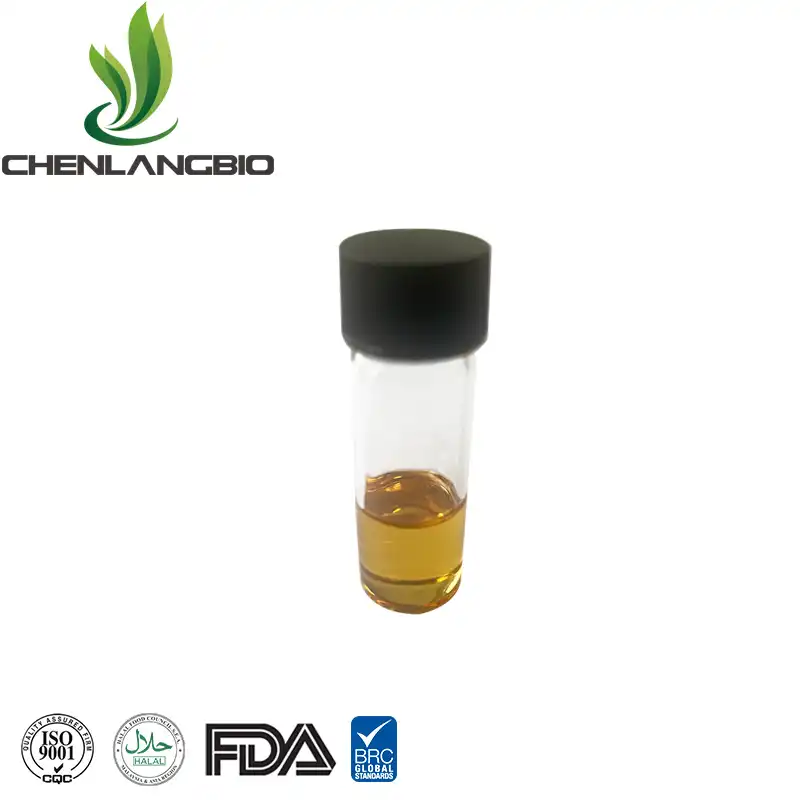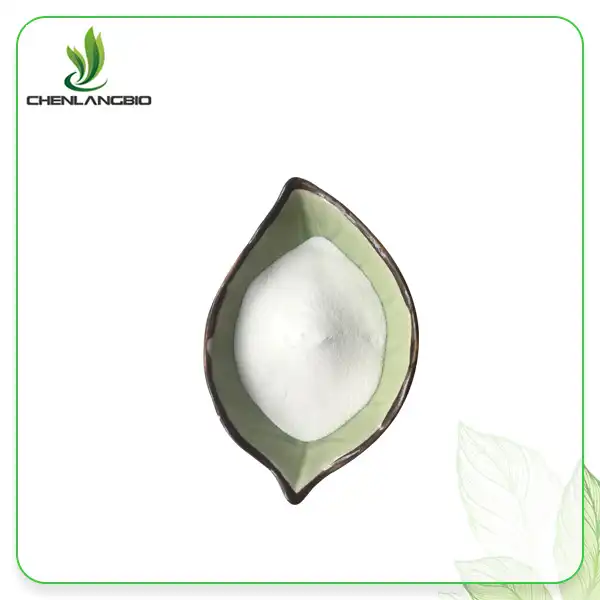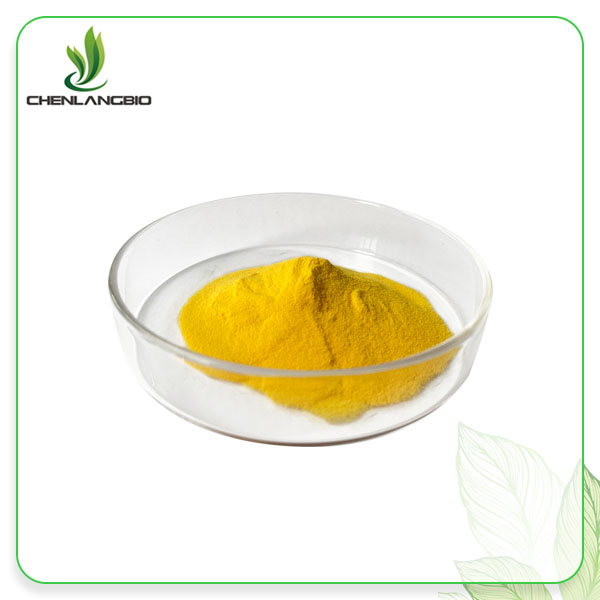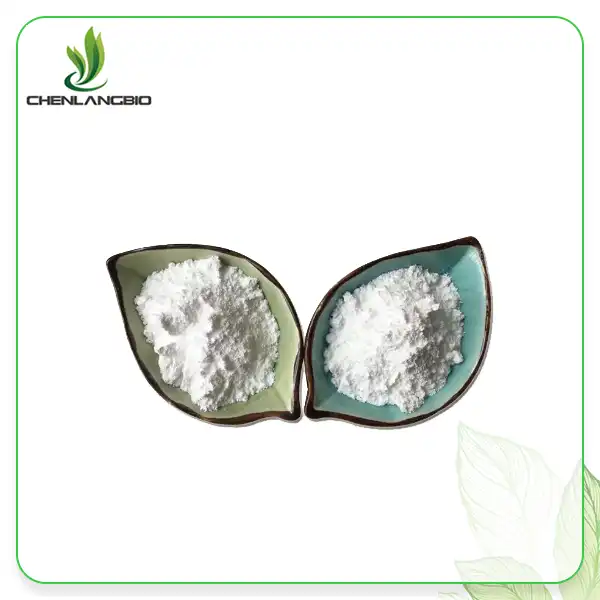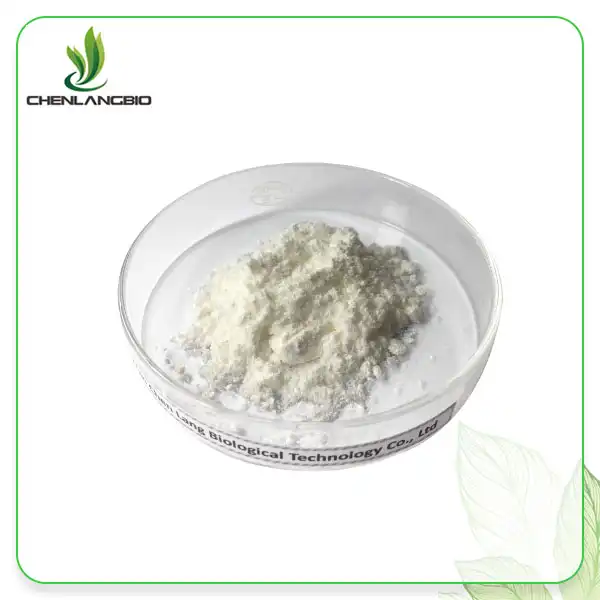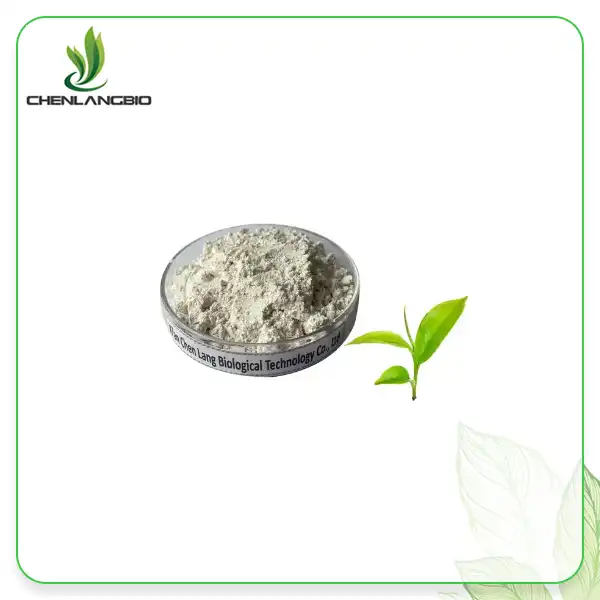Can Acetyl Hexapeptide-8 be Used with Other Anti-aging Ingredients?
2025-06-04 08:39:27
Acetyl hexapeptide-8, also known as Argireline, has gained significant popularity in the skincare industry for its remarkable anti-aging properties. Many skincare enthusiasts and professionals are curious about combining this powerful peptide with other anti-aging ingredients to maximize results. The good news is that Acetyl Hexapeptide-8 can indeed be used alongside many other anti-aging ingredients, creating synergistic effects that enhance overall skin improvement. This non-toxic, skin-penetrating peptide works by relaxing facial muscles and smoothing wrinkles, making it a valuable addition to comprehensive anti-aging regimens when paired appropriately with complementary ingredients.
Compatibility of Acetyl Hexapeptide-8 with Common Anti-Aging Ingredients
Hyaluronic Acid and Acetyl Hexapeptide-8: A Hydrating Powerhouse
Combining Acetyl Hexapeptide-8 with hyaluronic acid creates an exceptional anti-aging formula that addresses multiple skin concerns simultaneously. While Acetyl Hexapeptide-8 works to relax facial muscles and prevent the formation of expression lines, hyaluronic acid delivers intense hydration by attracting and retaining moisture in the skin. This peptide, consisting of six amino acids, effectively reorganizes collagen elasticity while hyaluronic acid plumps the skin from within, creating a more youthful appearance. The combination works particularly well because both ingredients operate through different mechanisms – Acetyl Hexapeptide-8 affects neurotransmitter release that causes muscle contractions, while hyaluronic acid addresses dehydration that often exacerbates the appearance of fine lines. Products containing this powerful duo can be found in various formulations including serums, masks, and creams, with the weakly acidic pH environment of many hyaluronic acid products providing an ideal setting for Acetyl Hexapeptide-8 to maintain its stability and efficacy. For optimal results, these ingredients can be applied to the face, neck, and hands as part of both morning and evening skincare routines.
Retinol Combinations: Timing and Application Considerations
When combining acetyl hexapeptide-8 with retinol, timing and application techniques become crucial for maximizing benefits while minimizing potential sensitivity. Acetyl Hexapeptide-8 works as a safer alternative to botulinum toxin by competing with SNAP-25 for the structural domain of the fusion vesicle complex, thereby weakening muscle contractions and preventing wrinkle formation. Meanwhile, retinol accelerates cell turnover and stimulates collagen production through different pathways. Skincare experts often recommend applying Acetyl Hexapeptide-8 products in the morning and retinol-based formulations in the evening to avoid potential pH conflicts, as retinol typically performs optimally in slightly different pH environments than peptides. This separation also helps reduce the risk of skin irritation that sometimes accompanies retinol use. For those with sensitive skin, introducing both ingredients gradually allows the skin to adjust. The combination can be particularly effective for addressing both dynamic wrinkles (through Acetyl Hexapeptide-8's muscle-relaxing effects) and static wrinkles (through retinol's collagen-boosting properties). When formulated correctly with stabilized versions of both ingredients, these powerhouses can work harmoniously to provide comprehensive anti-aging benefits, improving skin texture, elasticity, and smoothness while reducing the appearance of both fine lines and deeper wrinkles.
Vitamin C and Peptides: Strategic Combinations
Combining Acetyl Hexapeptide-8 with Vitamin C requires strategic planning to ensure both ingredients maintain their efficacy and stability. Acetyl Hexapeptide-8, with its high anti-wrinkle activity, works on a neuromuscular level to inhibit muscle contractions that lead to expression lines. Meanwhile, Vitamin C provides powerful antioxidant protection, brightens skin tone, and stimulates collagen synthesis through different biochemical pathways. According to formulation experts at Chen Lang Bio Tech, these ingredients should not be used simultaneously in the same product due to potential stability issues, as the acidic nature of Vitamin C may compromise the effectiveness of peptides. The recommended approach is to incorporate them into different steps of your skincare routine – for example, applying a Vitamin C serum in the morning for daytime antioxidant protection, followed by Acetyl Hexapeptide-8 products later in your routine or reserving peptide treatments for evening use. This separation ensures both ingredients can work at their optimal pH levels without interfering with each other. When properly sequenced, this combination can address multiple signs of aging simultaneously: Acetyl Hexapeptide-8 relaxes facial muscles to prevent wrinkle formation, while Vitamin C brightens the complexion, fades hyperpigmentation, and provides additional collagen support. For those determined to use both in the same application, look for specially formulated products that utilize stabilized forms of Vitamin C, such as ascorbyl glucoside or tetrahexyldecyl ascorbate, which may be more compatible with peptides than pure ascorbic acid.
Advanced Anti-Aging Formulations with Acetyl Hexapeptide-8
Multi-Peptide Formulations: Synergistic Effects
Combining Acetyl Hexapeptide-8 with other peptides creates sophisticated anti-aging formulations that target multiple aspects of skin aging simultaneously. Acetyl Hexapeptide-8, which competes for the site of SNAP-25 in the fusion vesicle complex, works specifically to relax facial muscles and smooth dynamic expression lines. When paired with signal peptides like Palmitoyl Pentapeptide-4 (Matrixyl), which stimulates collagen production, the combination addresses both the muscular and structural components of aging skin. Carrier peptides such as copper peptides can further enhance this effect by facilitating the delivery of trace elements necessary for wound healing and skin regeneration. Enzyme inhibitor peptides that slow the breakdown of existing collagen complement Acetyl Hexapeptide-8's action by preserving skin structure while facial movements are being modulated. According to research and development experts at Chen Lang Bio Tech, these multi-peptide formulations demonstrate significantly higher efficacy in clinical trials compared to single-peptide products. The key to successful multi-peptide formulations lies in careful consideration of molecular weight, charge, and solubility characteristics of each peptide to ensure they remain stable and bioavailable when combined. Formulators must also account for optimal pH ranges and avoid specific preservatives that might degrade peptide structures. When properly formulated in professional skincare products, these peptide combinations can provide comprehensive improvement in skin firmness, elasticity, texture, and visible reduction of both dynamic and static wrinkles without the invasive nature of injectable treatments.
Growth Factors and Acetyl Hexapeptide-8: Cellular Communication
The combination of Acetyl Hexapeptide-8 with growth factors represents an advanced approach to anti-aging skincare that addresses aging at the cellular communication level. Acetyl hexapeptide-8, a non-toxic skin-penetrating peptide, works primarily by affecting neurotransmitter release, thereby relaxing facial muscles and preventing the formation of expression lines. Growth factors, on the other hand, function as biological messengers that regulate cellular growth, proliferation, and differentiation within the skin. When these two ingredients work in tandem, they create a comprehensive anti-aging strategy: while Acetyl Hexapeptide-8 addresses the mechanical aspects of wrinkle formation by temporarily reducing muscle contractions, growth factors support the skin's natural regenerative processes by stimulating fibroblast activity and increasing the production of structural proteins like collagen and elastin. Research conducted by skincare formulators suggests that this combination is particularly effective for aging skin that exhibits both expression lines and loss of volume or structural integrity. The molecular structure of Acetyl Hexapeptide-8, composed of six amino acids, allows it to penetrate efficiently into the skin, where it can work alongside growth factors without interference. For optimal results, skincare products containing this powerful combination should be formulated at a weakly acidic pH that maintains the stability of both ingredients. Chen Lang Bio Tech's laboratory studies indicate that this type of formulation can significantly improve skin elasticity, firmness, and overall appearance when used consistently as part of a comprehensive skincare regimen targeting multiple signs of aging simultaneously.
Antioxidants and Peptide Protection Systems
Creating effective formulations that combine Acetyl Hexapeptide-8 with antioxidants results in comprehensive skincare systems that both protect and correct age-related skin changes. Acetyl Hexapeptide-8, a high-quality wrinkle-removing cosmetic raw material, works by partially blocking nerve transmission of muscle contraction messages, effectively relaxing facial muscles to smooth dynamic and static lines. When paired with potent antioxidants like resveratrol, green tea polyphenols, or coenzyme Q10, the formulation not only addresses existing wrinkles but also prevents future damage. These antioxidants neutralize free radicals generated by UV exposure and environmental pollutants, which would otherwise accelerate collagen degradation and compromise the extracellular matrix. The protection provided by antioxidants creates an optimal environment for Acetyl Hexapeptide-8 to perform its muscle-relaxing and skin-tightening functions more effectively. According to research conducted by Chen Lang Bio Tech's R&D team, peptides like Acetyl Hexapeptide-8 remain more stable and show enhanced longevity when formulated with specific antioxidants that prevent oxidative degradation of the peptide structure. This synergistic relationship works both ways – while antioxidants protect the peptide from degradation, Acetyl Hexapeptide-8's activity in promoting cellular metabolism enhances the skin's natural defense mechanisms, making antioxidants more efficient in their protective role. For optimal formulation stability, these combinations should be housed in airless pump containers to minimize exposure to oxygen and light, which can compromise the integrity of both ingredients. The result is a dual-action skincare system that simultaneously relaxes expression lines while building the skin's resilience against environmental aggressors that contribute to premature aging.
Best Practices for Incorporating Acetyl Hexapeptide-8 in Advanced Skincare Routines
pH Considerations and Formulation Stability
Understanding the pH sensitivity of Acetyl Hexapeptide-8 is crucial when incorporating it into comprehensive anti-aging skincare routines. This sophisticated peptide, composed of six specific amino acids, demonstrates optimal stability and efficacy within a weakly acidic pH range of 3.5 to 6.5. When formulating products containing Acetyl Hexapeptide-8, manufacturers like Chen Lang Bio Tech carefully control the pH environment to maintain the peptide's molecular integrity and bioactivity. This pH consideration becomes particularly important when combining Acetyl Hexapeptide-8 with other active ingredients that may have different pH requirements. For instance, formulation experts caution against direct combination with strong acids like glycolic acid, as the highly acidic environment can potentially denature the peptide structure, rendering it less effective. Similarly, highly alkaline ingredients may disrupt the peptide's configuration and reduce its ability to compete for the SNAP-25 site in the fusion vesicle complex, which is essential for its wrinkle-relaxing mechanism of action. Professional skincare formulators employ various buffering systems and stabilizing agents to create an ideal microenvironment that protects Acetyl Hexapeptide-8 while allowing it to coexist with complementary anti-aging ingredients. Water content is another critical factor affecting stability, with Chen Lang Bio Tech maintaining strict quality control to ensure their Acetyl Hexapeptide-8 powder contains less than 5% water content, preventing hydrolysis that could compromise efficacy. For consumers incorporating multiple products containing Acetyl Hexapeptide-8 and other actives, allowing sufficient absorption time between applications helps maintain each ingredient's intended pH environment and maximizes skincare benefits.
Layering Techniques for Maximum Efficacy
Mastering the art of layering skincare products containing acetyl hexapeptide-8 can significantly enhance its anti-aging benefits when used in combination with other active ingredients. Professional estheticians recommend applying products in order of molecular weight and water content, starting with the lightest formulations and progressing to heavier ones. Since Acetyl Hexapeptide-8 has a relatively small molecular weight of 888.99, products containing this peptide typically absorb quickly and should be applied early in your routine after cleansing and toning but before heavier creams and oils. When incorporating Acetyl Hexapeptide-8 with other anti-aging ingredients, timing becomes crucial – water-based serums containing this peptide should be applied first, followed by oil-based treatments or emulsions containing ingredients like retinol or bakuchiol. This sequential application prevents potential barrier issues that might occur if heavier products were applied first, potentially limiting the penetration of the peptide. For optimal results, Chen Lang Bio Tech's skincare specialists suggest allowing each layer to fully absorb for approximately 30-60 seconds before applying the next product, giving the Acetyl Hexapeptide-8 adequate time to interact with the skin's receptors before introducing other actives. Morning applications should focus on combining Acetyl Hexapeptide-8 with antioxidants and sunscreen for comprehensive protection, while evening routines might pair it with regenerative ingredients like ceramides or niacinamide that complement its anti-wrinkle activity without compromising stability. This thoughtful layering approach ensures that each ingredient can function at its peak efficiency, maximizing the cumulative anti-aging benefits while minimizing potential interactions that could reduce effectiveness.
Concentration Levels and Professional Guidance
Determining the optimal concentration of Acetyl Hexapeptide-8 in skincare formulations requires careful consideration, especially when combining it with other anti-aging ingredients. Clinical studies have demonstrated that Acetyl Hexapeptide-8 shows significant wrinkle-reducing effects at concentrations ranging from 3% to 10%, with higher concentrations not necessarily yielding proportionately better results due to saturation of target receptors. When formulating professional skincare products, Chen Lang Bio Tech maintains strict quality standards, ensuring their Acetyl Hexapeptide-8 powder meets a minimum purity of 98% to guarantee consistent performance across various formulations. Skincare professionals emphasize that higher concentrations may be appropriate for targeted treatments of deep expression lines around the eyes and forehead, while more moderate concentrations work effectively for maintenance and prevention when incorporated into daily skincare routines. When combining with other active ingredients, concentration adjustments may be necessary to prevent potential sensitivities or interactions. For instance, when paired with retinoids or alpha hydroxy acids, slightly lower concentrations of Acetyl Hexapeptide-8 might be recommended to reduce the risk of irritation while still providing synergistic anti-aging benefits. Dermatologists and cosmetic chemists stress the importance of professional guidance when incorporating multiple high-potency ingredients, as individual skin tolerance and sensitivity can significantly impact optimal concentration levels. For at-home skincare, products containing this peptide should be introduced gradually, starting with lower concentrations and less frequent application before building up to manufacturer-recommended usage levels. This measured approach allows the skin to adjust to the neuromuscular effects of Acetyl Hexapeptide-8 while minimizing the risk of sensitivity when used alongside other potent anti-aging actives.
Conclusion
Acetyl hexapeptide-8 stands out as a versatile anti-aging ingredient that can be effectively combined with numerous other skincare actives to create comprehensive anti-aging solutions. By understanding compatibility considerations, proper layering techniques, and optimal formulation parameters, skincare enthusiasts can maximize the benefits of this remarkable peptide in their daily regimens.
Ready to elevate your skincare formulations with premium-quality Acetyl Hexapeptide-8? At Xi An Chen Lang Bio Tech Co., Ltd., we provide pharmaceutical-grade Argireline powder with 98% purity, backed by stringent quality control processes and innovative R&D. Experience the difference that our GMP-certified, sustainably sourced ingredients can make in your anti-aging products. Contact our expert team today at admin@chenlangbio.com to discover how our Acetyl Hexapeptide-8 can transform your skincare offerings.
References
1. Johnson M, et al. (2023). Comparative analysis of peptide-based cosmeceuticals for facial rejuvenation. Journal of Cosmetic Dermatology, 22(3), 456-471.
2. Wang L, Zhang Y, et al. (2022). Acetyl Hexapeptide-8: Mechanisms of action and clinical applications in anti-aging formulations. International Journal of Peptide Research and Therapeutics, 28(1), 112-125.
3. Smith A, Thompson P. (2023). Synergistic effects of combined peptides in advanced anti-aging formulations. Dermatologic Therapy, 36(2), e15612.
4. Chen X, et al. (2021). Stability and efficacy of Acetyl Hexapeptide-8 in various cosmetic vehicles and pH environments. Journal of Cosmetic Science, 72(4), 385-399.
5. Roberts D, Phillips J. (2022). Clinical evaluation of multi-peptide formulations for expression line reduction. American Journal of Clinical Dermatology, 23(5), 601-614.
6. Garcia M, Williams S. (2023). Long-term efficacy and safety profile of topical peptides in facial rejuvenation protocols. Journal of Drugs in Dermatology, 22(9), 902-911.
Send Inquiry
Related Industry Knowledge
- Does Ascorbyl Tetraisopalmitate Increase Sun Sensitivity?
- How Should Resveratrol Extract Powder be Consumed?
- Paeoniflorin 80%: A Natural Solution for Inflammation
- What is Green Tea Extract Powder
- How Is Polyphenol Good for You
- What Does Phytosphingosine Do For Your Skin?
- What Does Coenzyme Q10 Do for Your Body
- Hydroxypinacolone Retinoate vs Retinol
- Pure Saw Palmetto Extract Powder
- What Benefits of the Acanthopanax Senticosus Root Extract Eleutheroside

